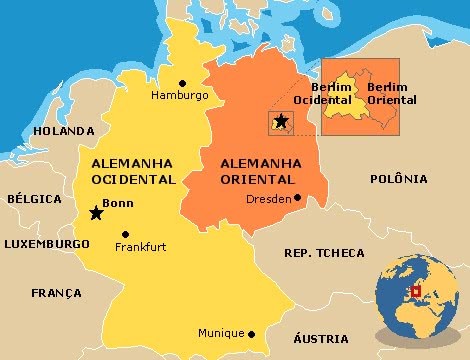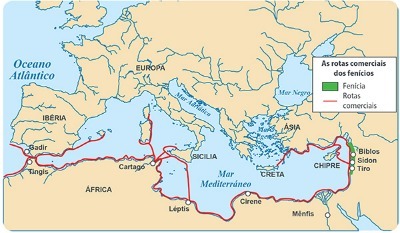O mesolithic, encompassed by Prehistory, is understood as a moment of transition between the Paleolithic it's the neolithic. Chronologically, this period extended from 13 thousand to 8 thousand BC. Ç. It was marked by climate change and improvements in the lifestyle of human beings.
Accessalso: Sumerians, one of the first peoples to settle in Mesopotamia
Summary on Mesolithic period
It was a transitional phase that happened in some places on the planet in the passage from Paleolithic to Mesolithic.
It extended around 13 thousand to 8 thousand BC. Ç. (although the periodization is controversial).
It was created by archaeologist Hodder Westropp to explain period transformations.
The climate changes that allowed transformations in the lifestyle of human beings.
Understanding the Mesolithic Period
The Mesolithic is understood by historians and archaeologists as a transition period between the Paleolithic and Neolithic. In it, the changes that marked this passage of periods took place, with human beings undergoing profound changes in their way of life.
It is important to mention that these changes did not only happen in the human lifestyle, but also in nature, as the Earth went through changesgeological, assuming the way we know it today. Experts understand that it was during this period that forests, steppes and deserts were formed.
Chronologically, there may be some divergence among scholars from this period. Thus, some authors suggest that the Mesolithic extended from 13 thousand to 8 thousand a. Ç., but others may suggest other dates, such as 10 thousand to 8 thousand a. Ç. Also, it is important to mention that not all places on Earth have gone through this transitional phase.
The Mesolithic was a period proposed by the 19th century archaeologist hodderWestropp. His idea was to propose a new period to explain the transition phase that took place between the Paleolithic and the Neolithic. Even today, there is a series of disagreements about this categorization, however, it remains accepted.
In any case, some scholars have chosen another classification to refer to the period of transition from the Paleolithic to the Neolithic — the Epipaleolytic. Other researchers, for example, understand the Epipaleolithic as an early Mesolithic phase.
Some scholars understand the Epipaleolithic as a phase that encompasses human populations that did not spontaneously make the transition from nomadism to sedentary lifestyle. As we can see, the classification of this period of human prehistory is complex.
Accessalso: Celts, people of antiquity who spread throughout most of Europe
Transformations of the Mesolithic Period
As we have seen, the Mesolithic was the moment of transition of human beings from the Paleolithic to the Neolithic, being thus, this period encompassed the moment in which the human being's lifestyle underwent transformations. deep. The main one involved the issue of sedentarizationofmen It's from developmentgivesagriculture.
The Paleolithic was the period when human beings were nomadic, lived in caves and survived exclusively from hunting and gathering. Thus, when the conditions for survival in one place began to get too harsh, groups of humans migrated to another area, where survival would be easier.
In the Neolithic, a great transformation took place due to the sedentarization of man, only possible because he developed agriculture and livestock. Thus, it became possible to produce all the food needed to ensure survival. Even planting and raising animals, human beings continued to hunt animals and gather fruits and roots in nature.
The transformations did not stop there, as human beings improved the tools they used in their daily lives and started to build their own house. Even in art there were significant changes. Remembering that the main artistic manifestation of the Paleolithic are the paintingsrocks, and from the Neolithic, the buildingsmegaliths.
Accessalso: Cretans, the original inhabitants of the island of Crete
Characteristics of the Mesolithic period

It is important to remember that the changes that humanity went through in this period that we understand as Mesolithic have a direct connection with the climatic changes that took place on the planet. O The endoftime courseinglaciation made the planet's average temperature milder.
This change was crucial, as it allowed humans to establish themselves in fixed places, without necessarily relying on caves to survive. Furthermore, the soil and climate have become better for growing food. Finally, changes in the Earth's temperature led to the extinction of certain species, which directly affected hunting.
Anyway, these changes probably notwerepeaceful, since the researcher Paul Kriwaczek suggested that the sedentarization of man was an event that must have generated friction between human beings, and also points out that the first groups that adopted agriculture led a more difficult life than the hunter-gatherers, in addition to having a more healthy diet. poor.|1|
As we have already seen, it was during this period that human sedentarization advanced, and this allowed man to establish himself in places close to rivers and the ocean. As this process progressed, the human way of life became more sophisticated and initial difficulties, such as poor diet, were overcome.
So the Mesolithic period was also marked by improvement. gradual in the diet of human being, which could consume animals, obtained by hunting and fishing, fruits and roots, by gathering, and other food, by cultivation.
The sedentarization of the human being and the growth of human groups allowed cities could appear in regions of the Middle East, for example. In the long run, life in society was founded as these groups became large and complex societies. THE division of labor and the hierarchy of society also started at that time.
Grades
|1| KRIWACZEK, Paul. Babylon: Mesopotamia and the birth of civilization. Rio de Janeiro: Zahar, 2018. for. 36.
Image credits
[1] PavleMarjanovic and Shutterstock
[2] mirjana ristic damjanovic and Shutterstock



